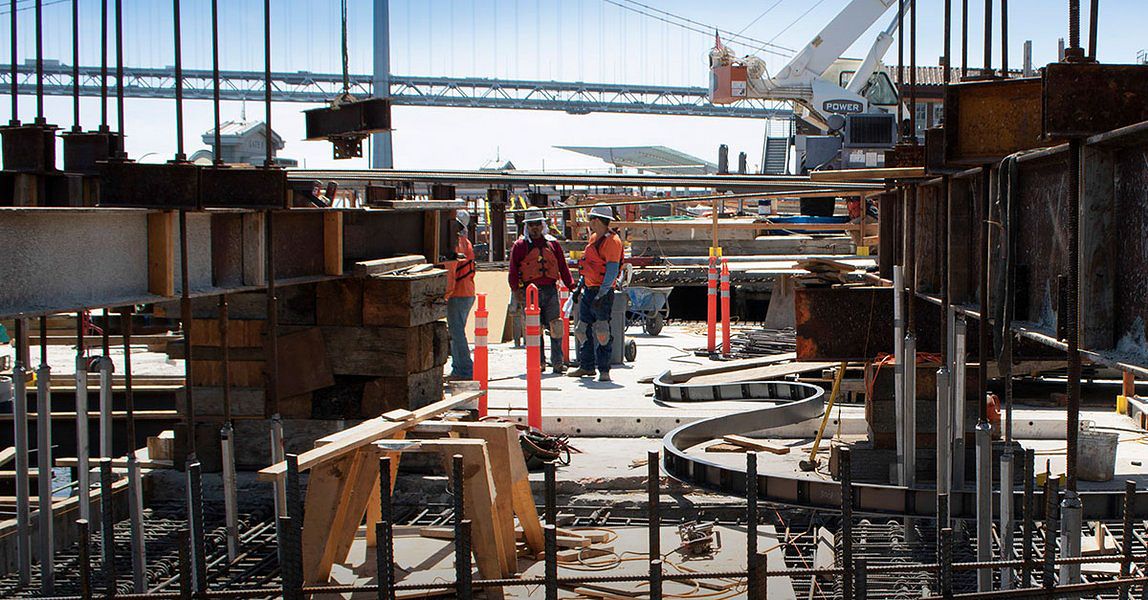Transforming Freelance Practice into a High-Performing AEC Firm through Executive Coaching
Jun 26, 2025
Transforming Freelance Practice into a High-Performing AEC Firm through Executive Coaching
Key Insights from Lean AEC Executive Coaching

• Holistic Lean Integration: Professionals will learn to apply Lean principles across the entire project lifecycle, from initial design to final construction, moving beyond project-specific applications to encompass firm-wide operations.
• Waste Reduction & Value Maximization: A core focus will be on systematically identifying and eliminating various forms of waste in AEC projects while simultaneously enhancing value delivery for all stakeholders.
• Collaborative Ecosystem Development: The program emphasizes fostering strong, trust-based relationships and shared goals among all project participants, transitioning from adversarial dynamics to integrated team collaboration.
An executive coaching program focused on implementing Lean principles in Architecture, Engineering, and Construction (AEC) project delivery offers a transformative pathway for architects and engineers looking to scale their freelance operations into established, efficient firms. This comprehensive training equips them with the strategic mindset, practical tools, and collaborative methodologies essential for managing complex projects at a larger scale, optimizing workflows, and fostering a culture of continuous improvement.
Mastering Core Lean Principles in AEC
At the heart of such a program is a deep dive into the fundamental principles of Lean, adapted specifically for the AEC industry. Participants will gain a robust understanding of how these principles, initially popularized in manufacturing, translate into the unique challenges and opportunities within design and construction. This involves a shift in perspective, moving from ad-hoc freelance methods to structured, repeatable firm-level systems.
Defining Value from the Client's Perspective
A crucial first step in Lean thinking is to define "value" precisely from the customer's viewpoint. Architects and engineers will learn to identify what truly matters to clients and stakeholders, ensuring that all efforts contribute directly to delivering this defined value. This focus helps eliminate activities that do not add value, thereby streamlining processes and increasing client satisfaction. Understanding this principle is fundamental for a firm, as it aligns all internal processes with external client needs, creating a cohesive and value-driven approach to project delivery.
Mapping and Optimizing the Value Stream
Participants will learn the critical skill of value stream mapping. This involves visually documenting every step in the project delivery process, from initial concept to final handover. The purpose is to identify areas where waste occurs, such as unnecessary steps, delays, or rework. By meticulously mapping the value stream, professionals can pinpoint bottlenecks and inefficiencies, leading to optimized workflows and enhanced project flow. This systematic approach is vital for scaling, as it allows for the standardization and improvement of processes that can be replicated across multiple projects and teams.
Strategies for Waste Reduction and Enhanced Efficiency
A core tenet of Lean is the relentless pursuit of waste elimination. Participants will learn to identify and reduce various types of waste prevalent in AEC projects, which can significantly impact project timelines and budgets. This knowledge is paramount for an evolving firm, as it directly impacts profitability and competitive advantage.
Identifying the "Eight Wastes" in AEC
The coaching program will teach professionals to recognize and address the "eight wastes," often adapted from manufacturing to the construction industry: defects, overproduction, waiting, non-utilized talent, transportation, inventory, motion, and over-processing (DOWNTIME). For example, they will learn to minimize rework (defects) through early clash detection and clear communication, reduce idle time (waiting) through optimized scheduling, and leverage team members' skills effectively (non-utilized talent). Construction managers oversee operations, highlighting the importance of efficient workflows and waste reduction in project delivery.
Leveraging Continuous Flow and Pull Systems
Beyond simply identifying waste, the program will emphasize creating continuous flow in project execution, minimizing interruptions and ensuring smooth transitions between phases. This often involves implementing a "pull system," where work is initiated only when there is a demand for it, preventing overproduction and excess inventory. This is a significant shift from traditional "push" systems, helping firms manage resources more effectively and respond dynamically to project needs.
Fostering Collaboration and Integrated Project Delivery
Scaling from freelance to a firm necessitates a profound shift towards collaborative practices. Lean principles strongly emphasize respect for people and trust, which are foundational for effective teamwork and integrated project delivery (IPD). The coaching program will focus heavily on building these collaborative capabilities.
Building Trust and Shared Goals
Architects and engineers will learn how to cultivate strong, trust-based relationships with all project stakeholders—clients, contractors, suppliers, and other consultants. This involves fostering open communication, promoting shared knowledge, and aligning everyone around common project goals. Moving away from adversarial relationships, common in traditional project delivery, to a more integrated and functional team environment is a key outcome.
Implementing Integrated Project Delivery (IPD)
A significant component of the program will be the adoption of IPD frameworks. IPD is a project delivery method that integrates people, systems, business structures, and practices into a process that collaboratively harnesses the talents and insights of all participants to optimize project results, increase value to the owner, reduce waste, and maximize efficiency. For a scaling firm, IPD provides a robust framework for managing larger, more complex projects with improved accuracy and reduced rework.
Practical Lean Tools and Techniques for AEC
The executive coaching program will introduce participants to a suite of practical Lean tools and techniques specifically applicable to AEC project management. These tools are designed to facilitate efficient workflows, promote transparency, and drive continuous improvement across the firm's operations.
Key Methodologies and Digital Integration
Key tools include the Last Planner System, which enhances reliable workflow and predictable project completion; Building Information Modeling (BIM), which supports collaboration and visual management; 5S methodology (Sort, Set in order, Shine, Standardize, Sustain) for workplace organization; and Kanban boards for visualizing work in progress and managing flow. The program will also emphasize the integration of digital tools and technologies, such as GIS for spatial data analysis and ERP solutions, to extend internal processes to external teams, critical for managing high-volume work effectively.
Strategic Scaling and Firm Management through Lean
Beyond project-specific applications, the executive coaching program extends Lean principles to the broader context of firm management. This holistic approach
ensures that the growth from freelance to firm is not just about increasing project volume but about building a sustainable, efficient, and scalable organization.
Developing Growth Strategies and Business Operations
Participants will learn to develop robust growth strategies, including hiring the right talent, managing organizational expansion, and maintaining high standards of quality across all operations. This includes establishing formal business operations, such as financial management systems, comprehensive project management frameworks, and sophisticated client relationship management (CRM) strategies. By applying Lean to these areas, firms can ensure consistency, reduce administrative waste, and create a scalable project management ecosystem.
Cultivating a Culture of Continuous Improvement
A fundamental shift facilitated by the coaching program is instilling a mindset of "perfection" through continuous improvement (Kaizen). This means constantly assessing and refining architectural and engineering methodologies, applying lessons learned from one project to the next, and fostering an environment where innovation and problem-solving are encouraged at all levels. This cultural transformation is crucial for long-term firm success and adaptability in a dynamic industry.
Summary of Key Learnings

The following table summarizes the key areas of learning within an executive coaching program focused on Lean principles for AEC professionals seeking to
scale their operations.
- Core Lean Principles
- Waste Identification & Reduction
- Collaborative Project Delivery
- Lean Tools & Techniques
- Strategic Firm Management
- Continuous Improvement Culture
- Digital & Technological Integration
Frequently Asked Questions
What is the primary goal of an executive coaching program focused on Lean AEC for freelancers?
The primary goal is to equip architects and engineers with the knowledge and skills to transition their freelance operations into a structured, efficient, and scalable firm by applying Lean principles to project delivery and overall business management.
How do Lean principles help reduce costs in AEC projects?
Lean principles help reduce costs by systematically identifying and eliminating various forms of waste, such as rework, unnecessary waiting times, over-processing, and misutilization of resources. This leads to streamlined workflows, improved efficiency, and less expenditure on non-value-added activities.
What is Integrated Project Delivery (IPD) and why is it important for a scaling firm?
Integrated Project Delivery (IPD) is a collaborative approach that brings all key stakeholders together early in the project lifecycle to optimize outcomes, reduce waste, and maximize efficiency. For a scaling firm, IPD is crucial because it promotes trust, shared goals, and streamlined communication, allowing for the effective management of larger and more complex projects.
What digital tools are typically discussed in Lean AEC coaching programs?
Such programs often cover digital tools like Building Information Modeling (BIM) for collaborative design and visual management, Geographic Information Systems (GIS) for spatial data analysis, and Enterprise Resource Planning (ERP) solutions for integrating and managing firm-wide processes. These tools enhance efficiency, reduce errors, and improve overall project delivery.
Conclusion
An executive coaching program focused on Lean principles for AEC project delivery provides a robust framework for architects and engineers aiming to scale their freelance work into successful firms. By deeply understanding core Lean concepts, mastering waste reduction, fostering collaborative environments, and leveraging practical tools, participants are empowered to transform their operational models. This comprehensive learning not only enhances project efficiency and value delivery but also cultivates a culture of continuous improvement, paving the way for sustainable growth and a competitive edge in the AEC industry.
M. Arch | L&D Specialist | AEC coach |
www.me3margi.com
info@me3margi.com
P.S. Stay connected for more tips, strategies, and industry insights to propel your career forward in Civil Engineering and Construction! Click here to join us on this journey of growth and success!
Follow Us | Facebook | Twitter | LinkedIn | WhatsApp | Instagram | YouTube | eGroup Store
